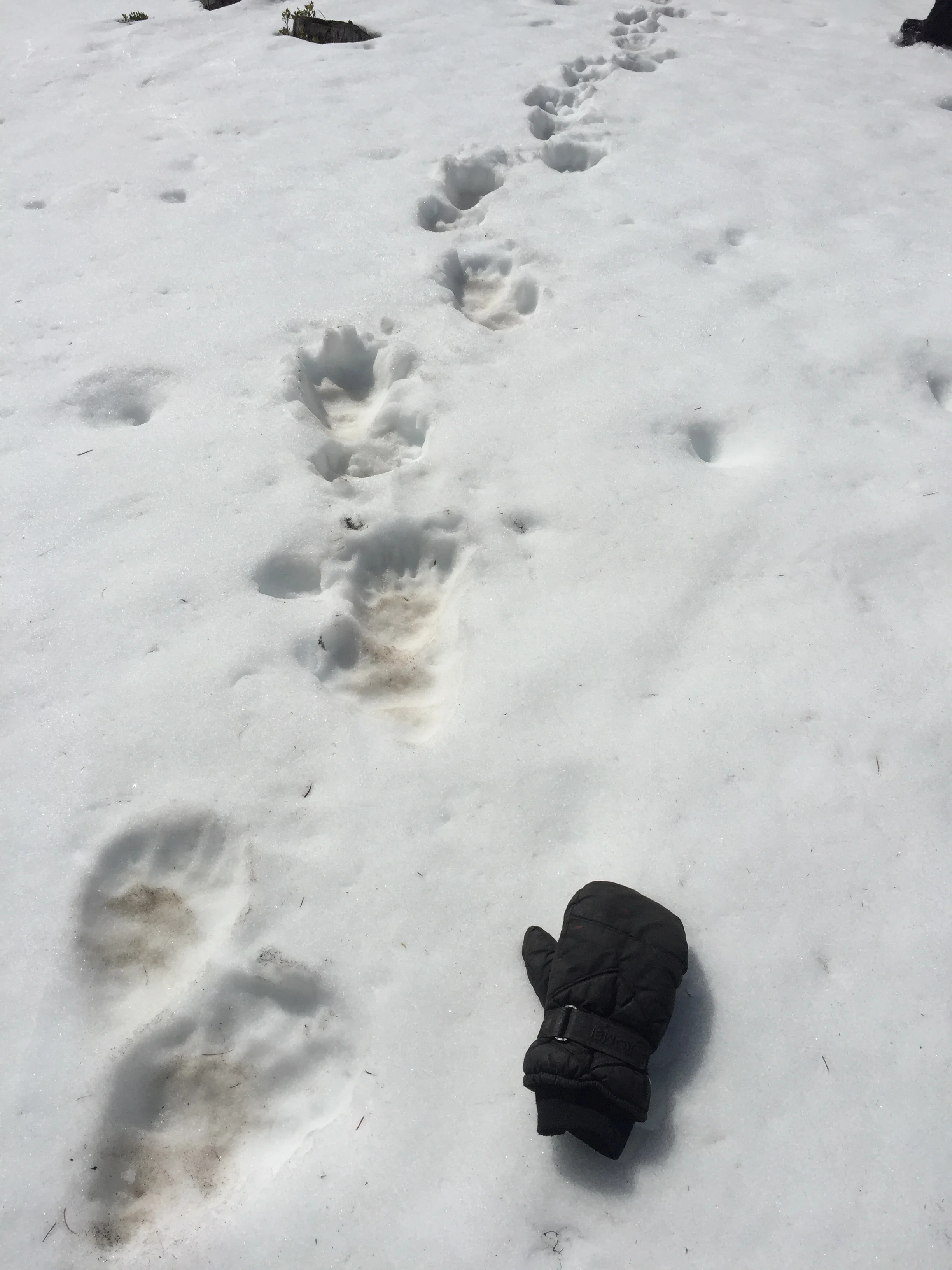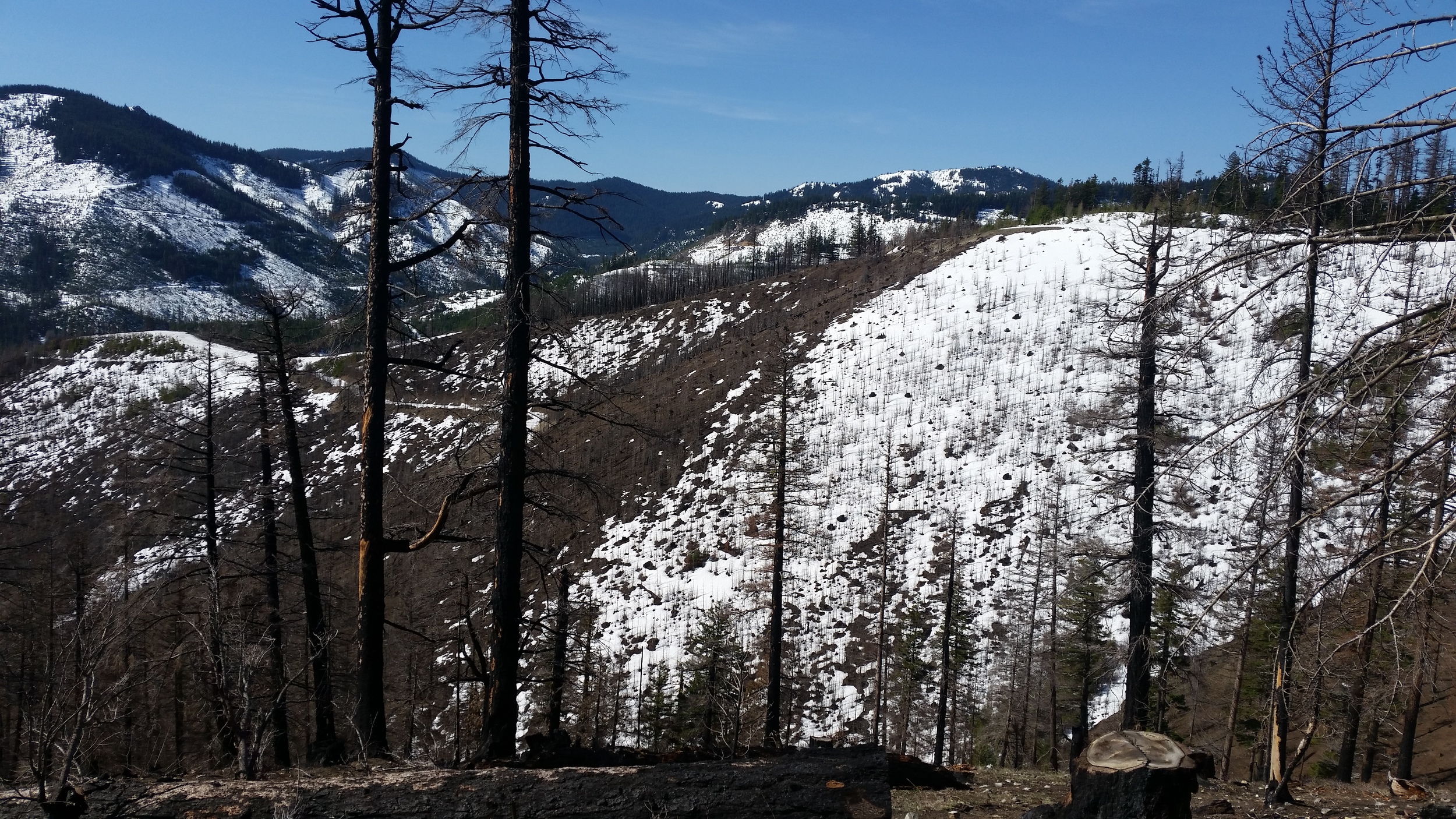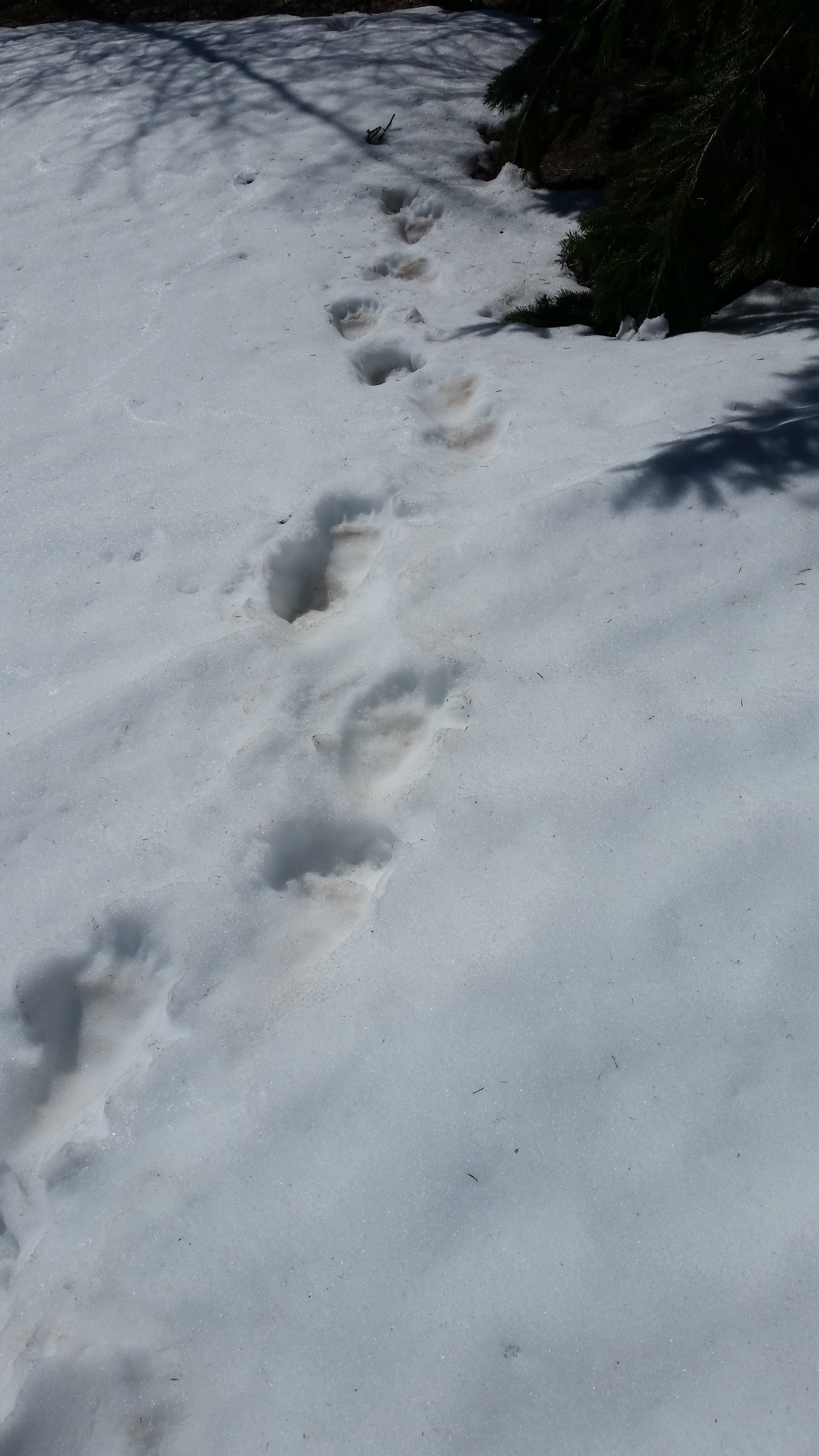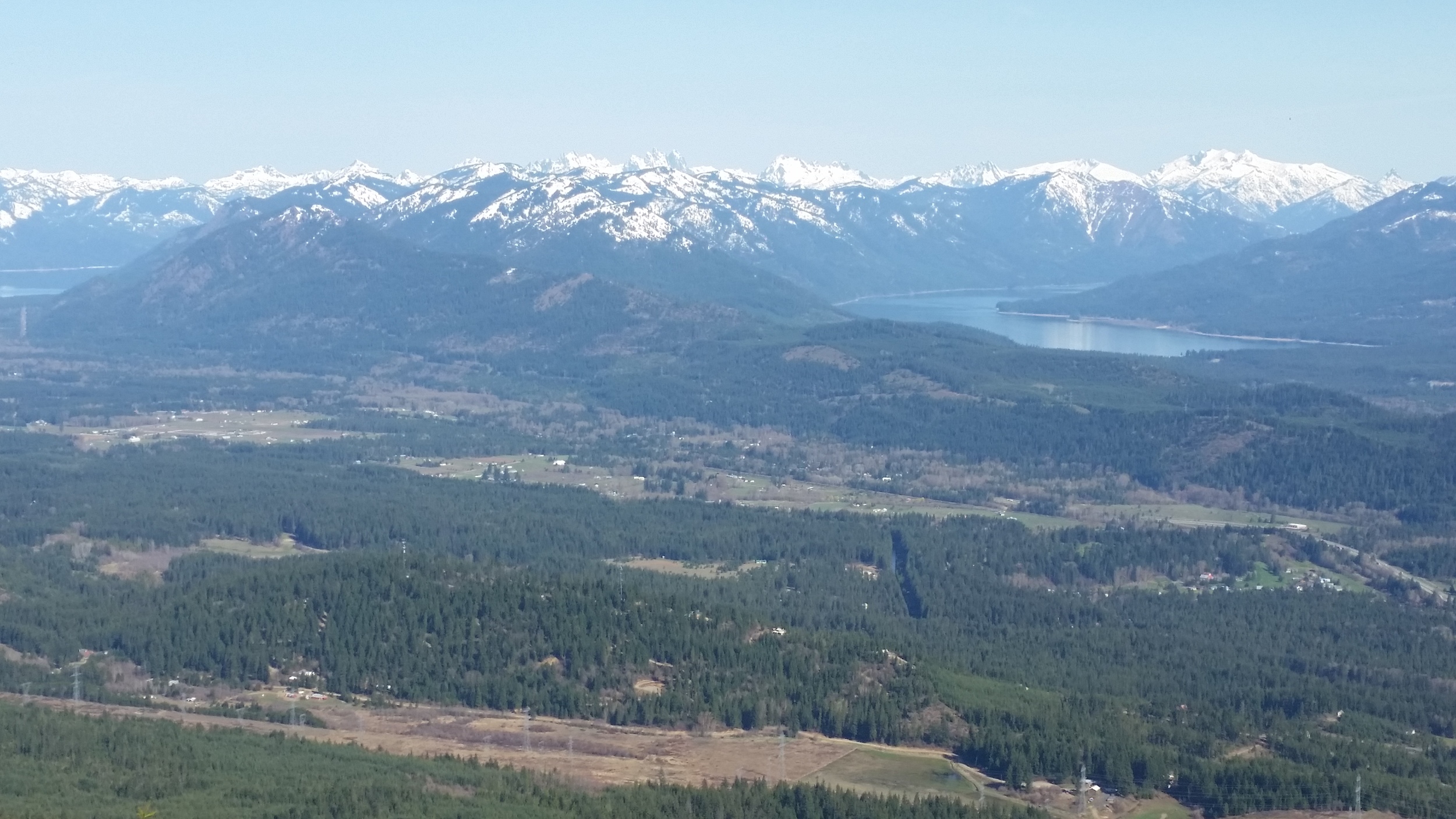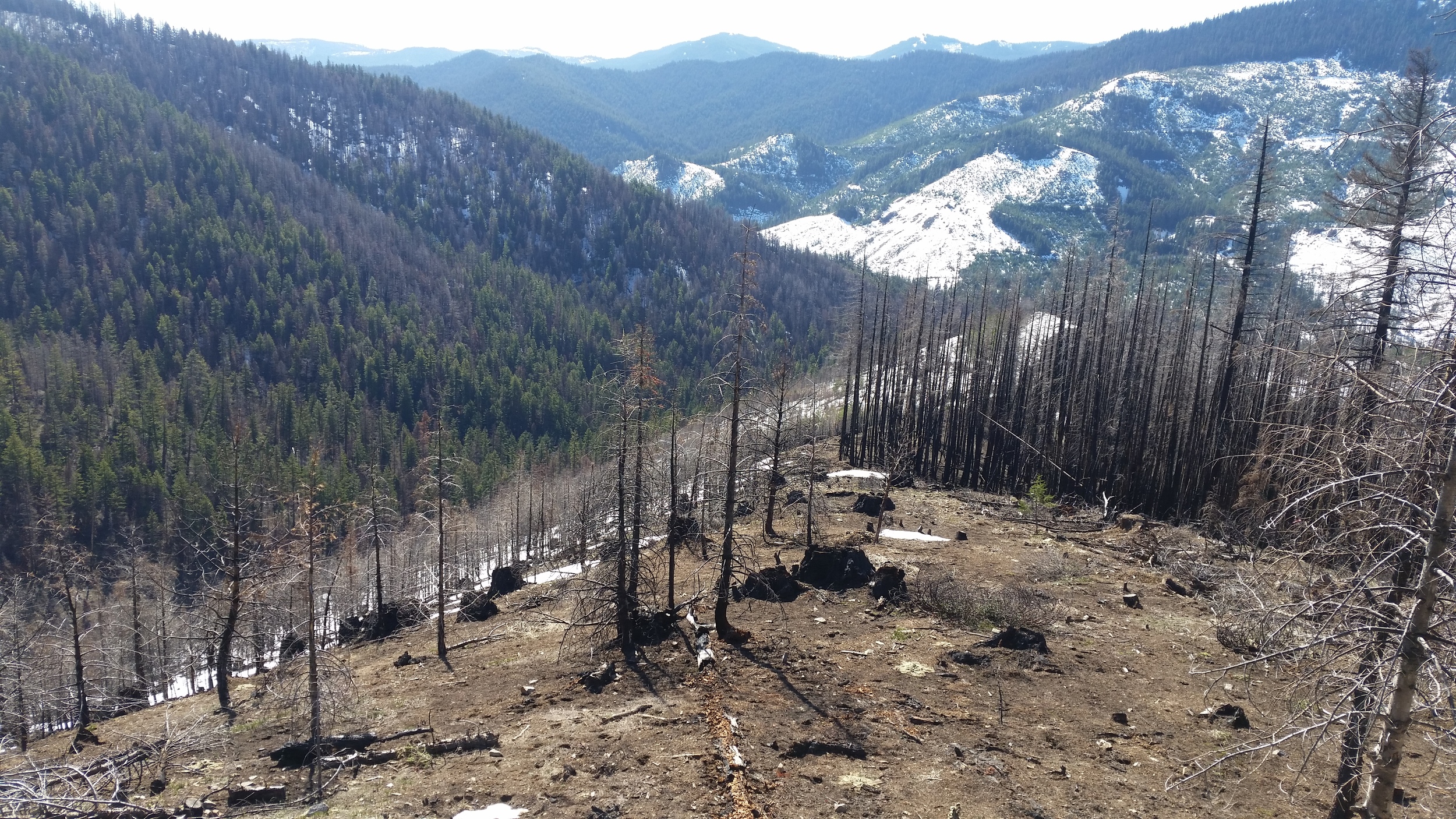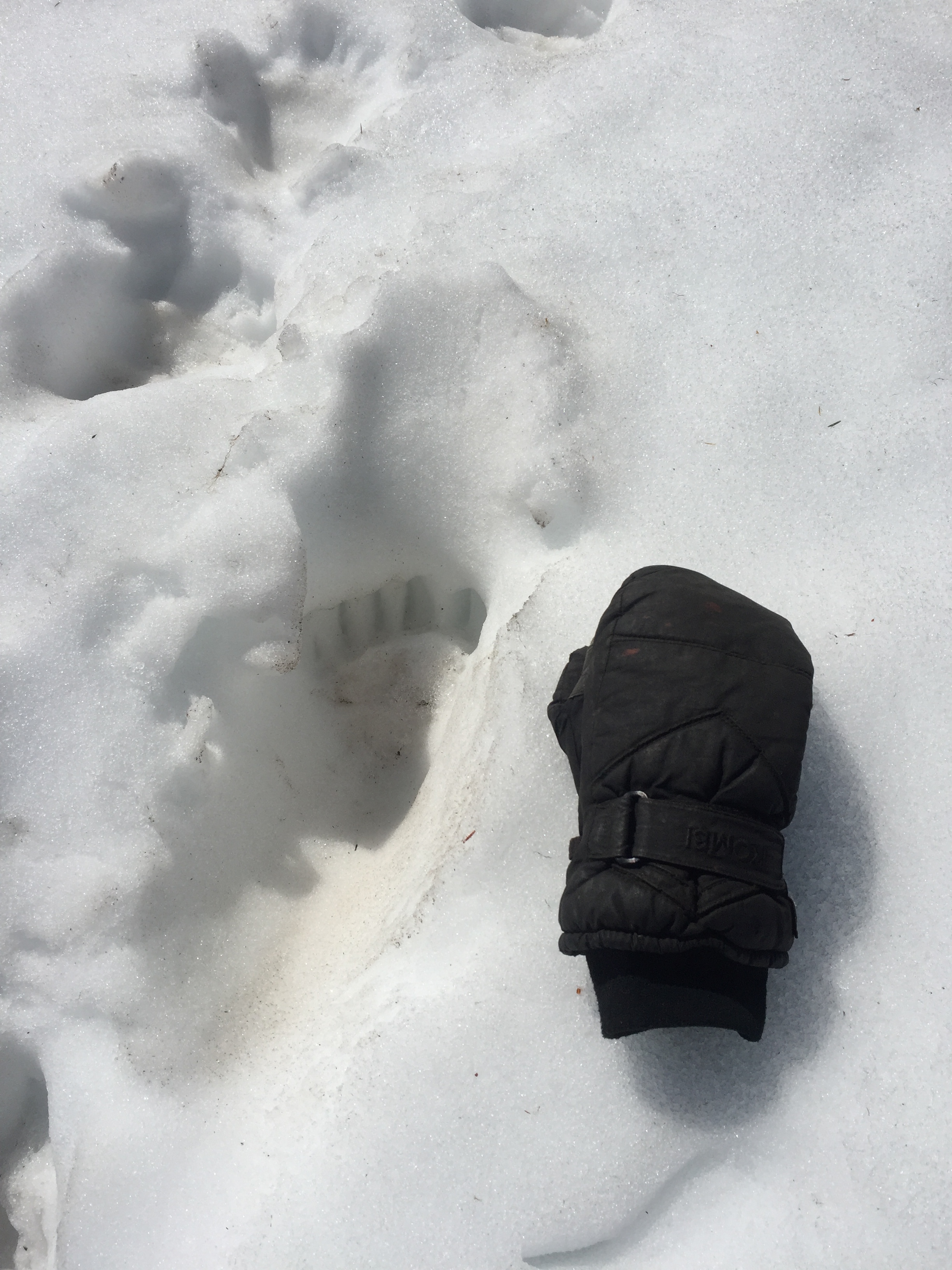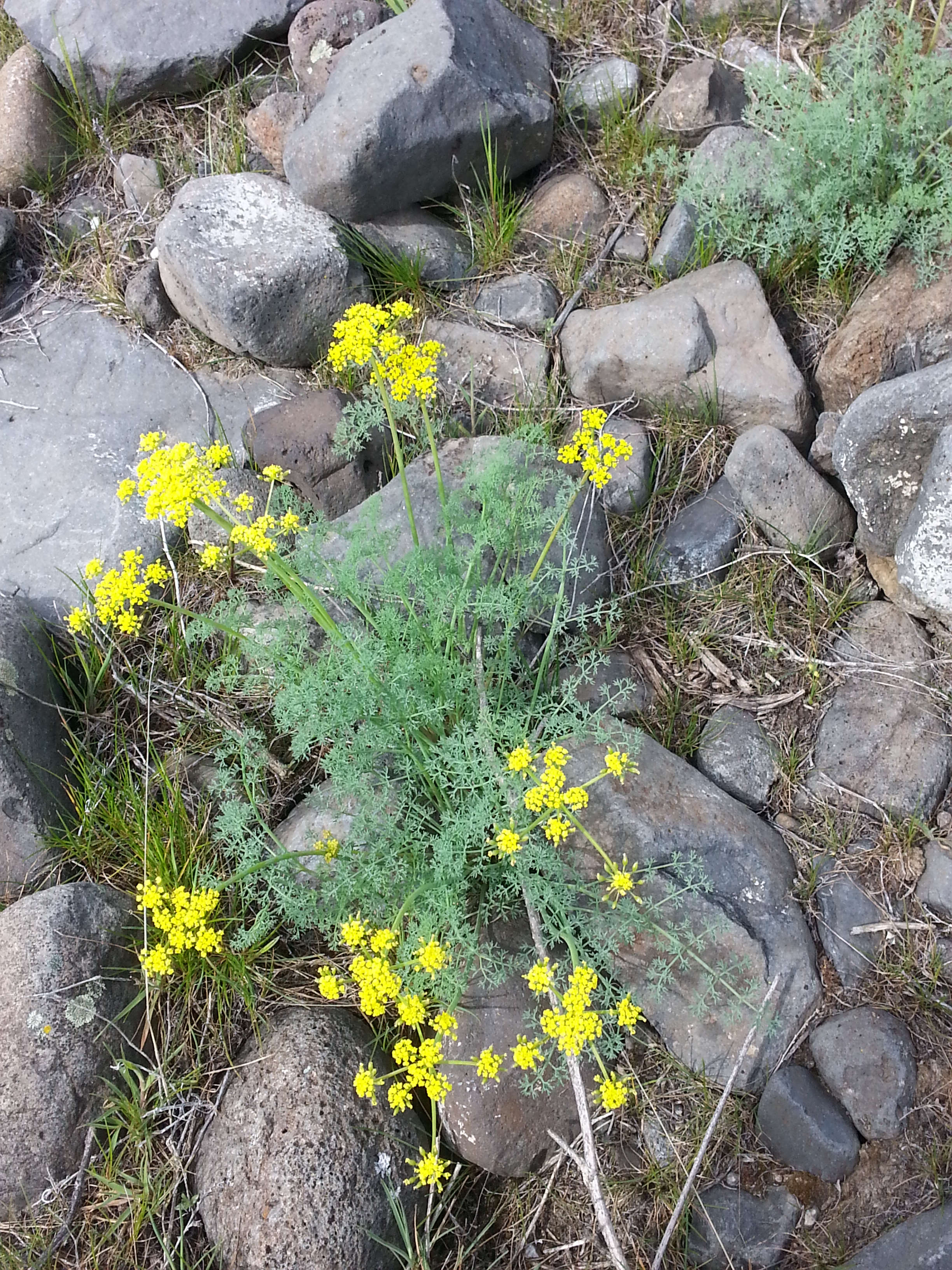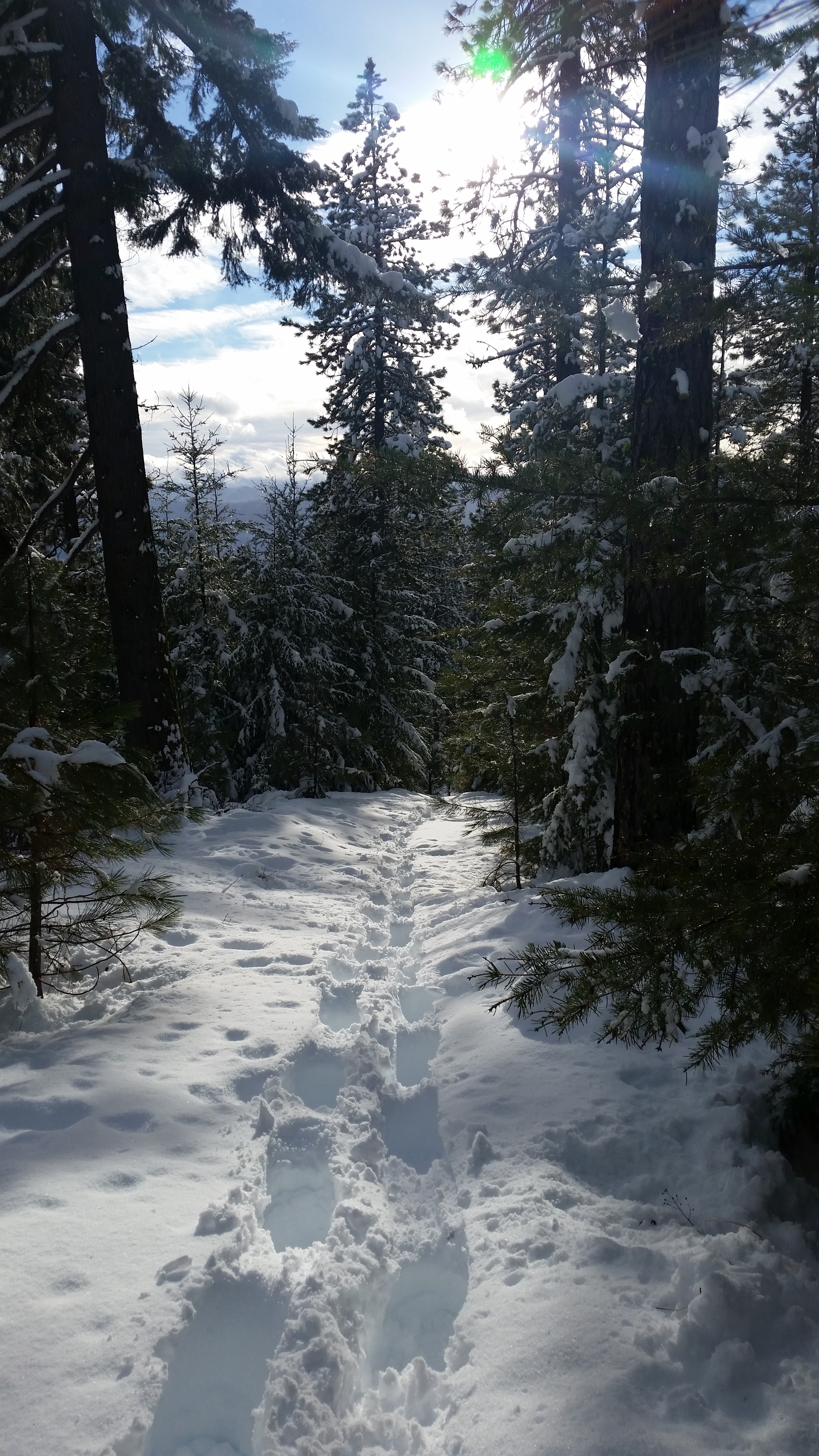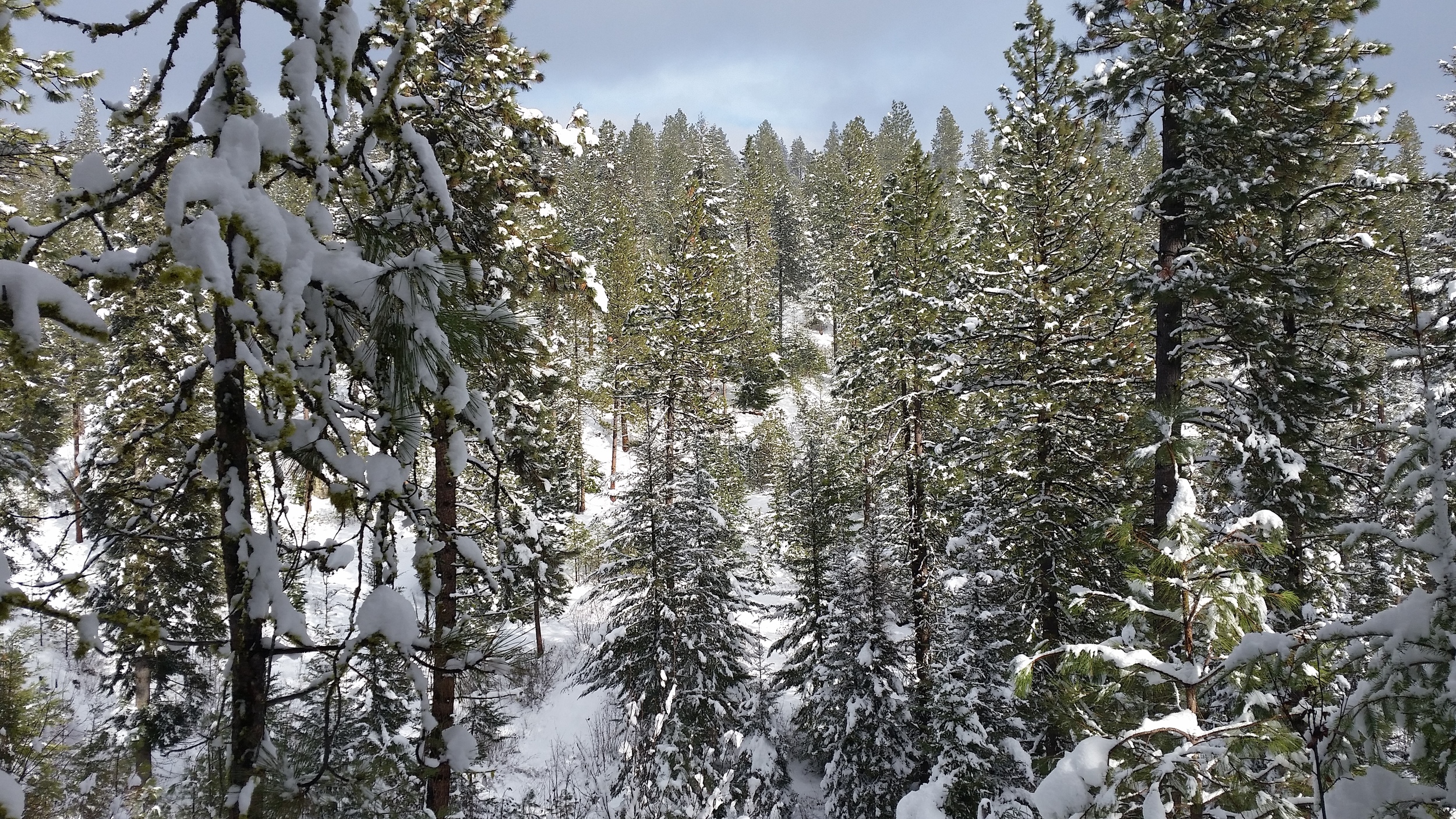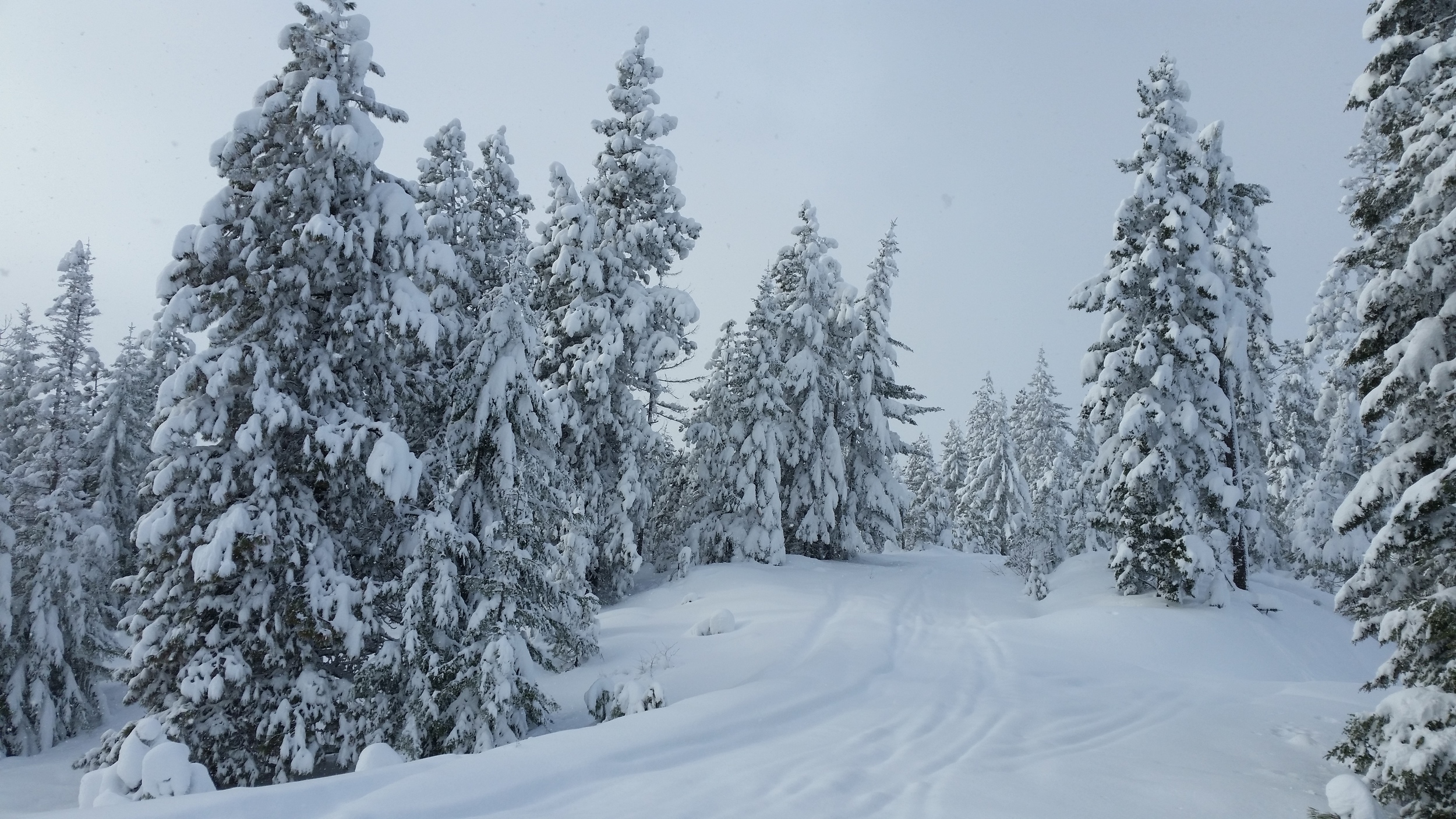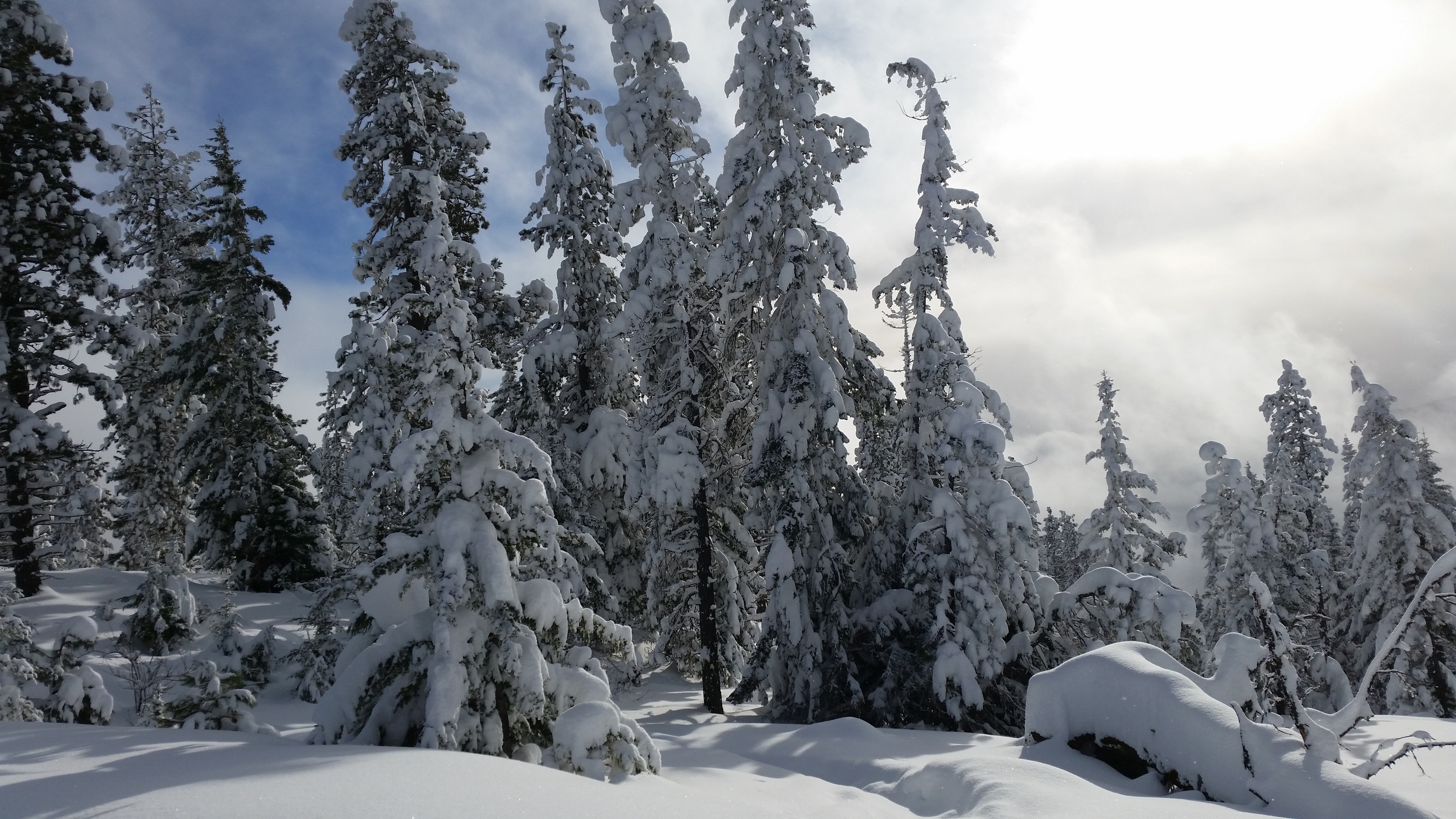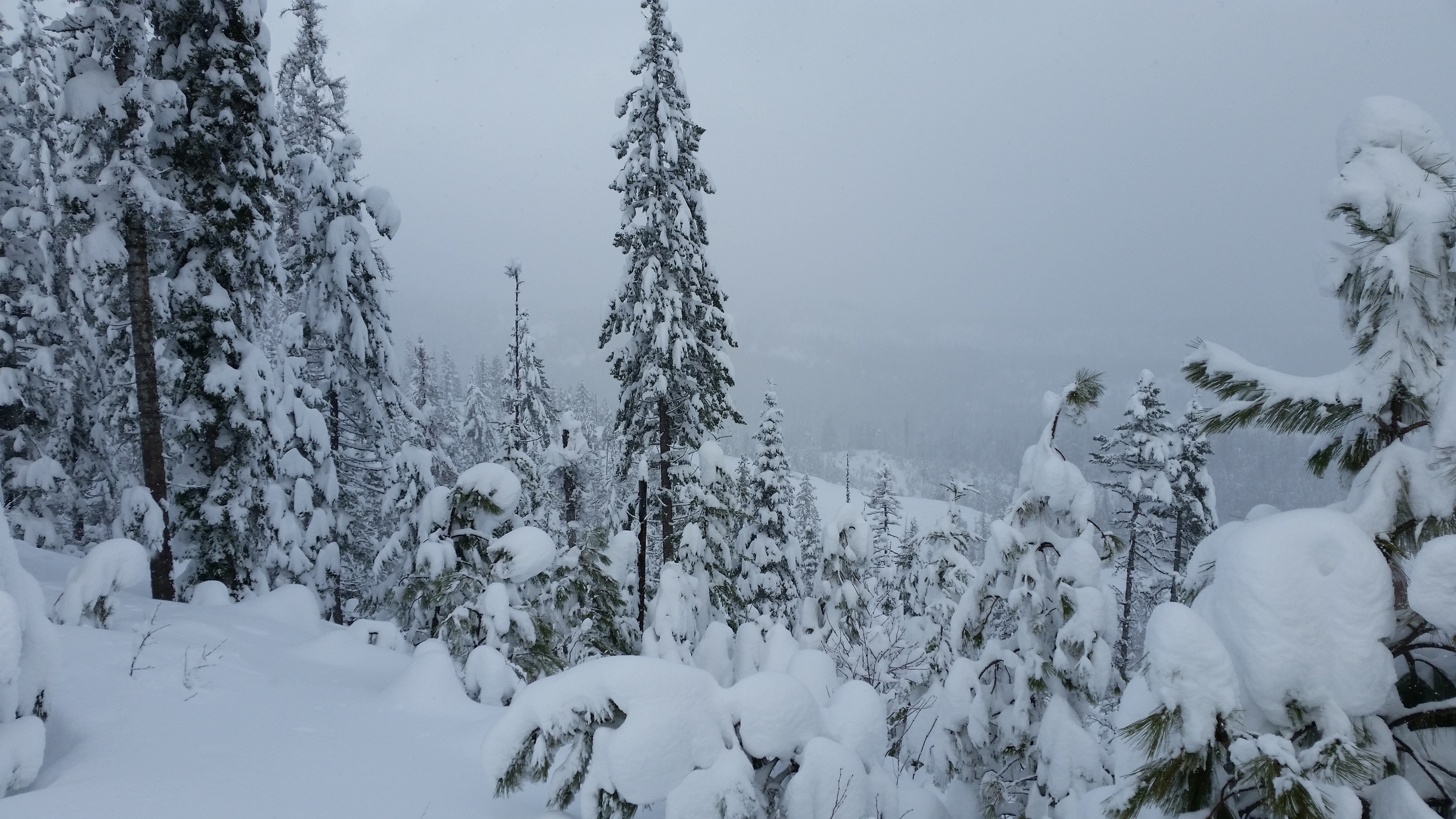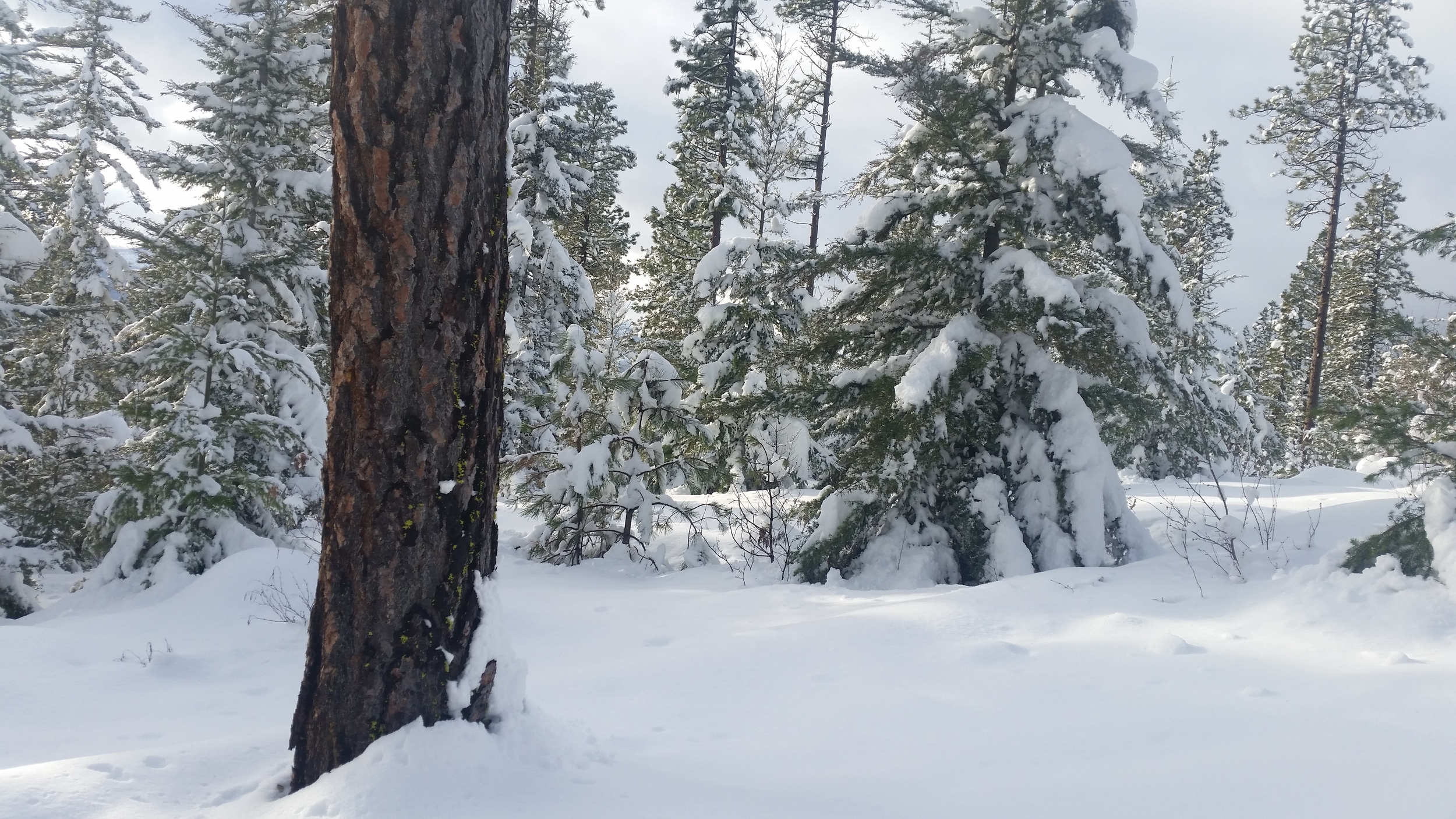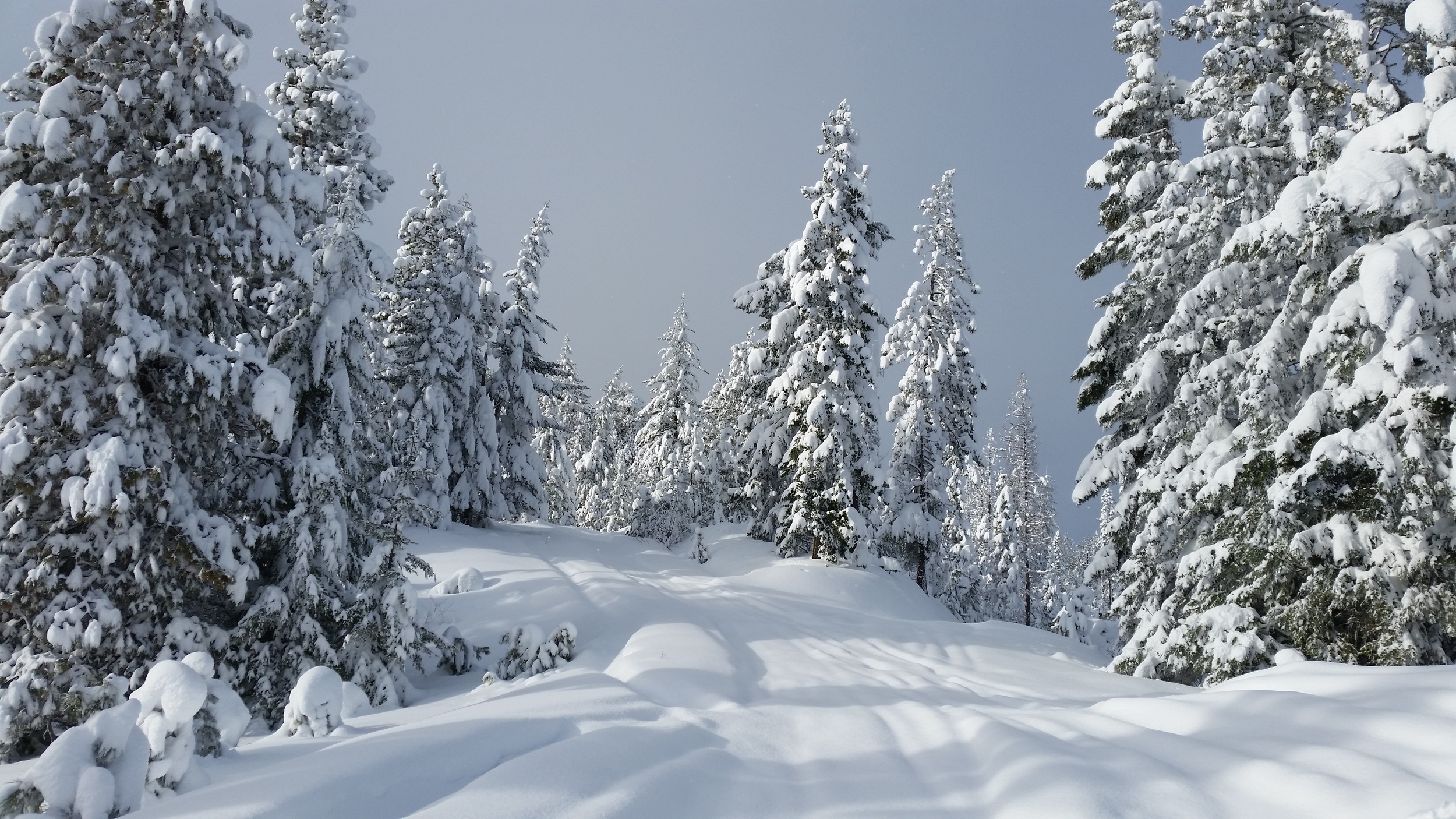Here are five Nature Conservancy preserves in Washington that you can visit anytime to immerse yourself in the beauty of nature, while learning about The Nature Conservancy’s conservation efforts.
Meet Herman Flamenco, Central Cascades Conservation Forester
Community in the Forest in the Time of Covid
Since the Central Cascades Forest reopened, I have been reflecting on the profound service we are providing our community by offering our privately-owned land to the public. As we patrol the Cle Elum Ridge, just north of the small towns to Cle Elum, Roslyn, and Ronald, the community members we encounter are engaging in a more meaningful manner.
Beyond 60: The Nexus of People & Nature in the Central Cascades
A big milestone for the Central Cascades Forest, thanks to Land and Water Conservation Fund
Grandmother Ponderosa
Volunteers Plant Trees on Cle Elum Ridge
19,000 Seedlings Planted Near Cle Elum
"Good Fire" Training Returns to Central Washington
A Much-Needed $2.3M Boost for Water, Wildlife and Fire-Risk Reduction
Schooled on forest-health management
Writing and photo by Dr. Dave Shaw, Oregon State University
Ryan Haugo, a Nature Conservancy senior forest ecologist, hosted our graduate field forest-health class in the Manastash-Taneum Resilient Landscapes Project area in September. It was an epic visit that completely blew our minds.
Beginning with a stunning view of the Washington Cascades, Ryan introduced us to the Tapash Sustainable Forest Collaborative, which is implementing a scientifically based ecosystem-management plan for a complex terrain with mixed owners and ownership history. The landscape is rugged, showing recent fire impacts and is comprised of mixed conifer forests, which vary depending on elevation, aspect and soils.
The effort to use active management, such as forest thinning, planting and prescribed fire, to advance ecological integrity and biodiversity, is a classic example of forest-health management.
This is the application of knowledge gained by a group of interacting scientists and managers, led by the U.S. Forest Service's Pacific Research Station, The Nature Conservancy and University of Washington scientists. It can be considered a test of current theories on how best to manage Eastside Cascades forests for the benefit of everyone.
Read more about the Central Cascades forest
Save the Forest. Save the Beer.
Photo Credit: Epic Beer, Flickr
Climate change is threatening even the beer we drink.
The Yakima Valley is Washington’s agricultural treasure house, home to rich crops of cherries, peaches, apples, wine grapes and hops – a key ingredient for beer.
About 75 percent of the nation’s hops come from the Yakima Valley. They’re valued around the world because the valley produces so many varieties of hops.
All this bounty is dependent on the Yakima River, which flows down from the Cascade Mountains and nurtures about 6,150 square miles of forests, farms and communities.
And that river is under stress. The need for water for farms, salmon habitat and communities exceeds what is available. The situation is getting worse as communities grow and a changing climate shrinks the snowpack. In 2015, Washington suffered through one of its worst droughts in history, with record-low snowpack to sustain the river. And NOAA reports that affects hops as much as anything else.
What can we do about it?
One measure is to protect the forest from which the river flows. Healthy forests protect the snowpack, filter the water and ensure clean cool water for the future.
In 2014, The Nature Conservancy acquired nearly 48,000 acres of forest lands in the Central Cascades, including 390 miles of rivers and streams and the headwaters of the Yakima River.
We’re working with partners to restore these forests to health and ensure the streams and rivers will flow clean and clear for generations to come, sustaining salmon, people and beer.
Visit OktoberForest.org to learn more
Central Cascades Forest Restoration Project Honored
Photographed by John Marshall
A groundbreaking forest restoration project led by The Nature Conservancy here in Washington has been honored with the SFI Leadership in Conservation Award at the Sustainable Forestry Initiative (SFI) 2016 Annual Conference.
“At its heart, the Manastash-Taneum Resilient Landscape Restoration Project recognizes that good forest management, which includes responsible harvesting, allows fire-, insect-, and disease-resistant forests to thrive and also benefits a diversity of species,” said the award announcement.
"We are so pleased to recognize the Washington Department of Natural Resources (DNR) and the Yakama Nation, both SFI Program Participants, and their partners the Washington Department of Fish & Wildlife, The Nature Conservancy, and the U.S. Forest Service," said Kathy Abusow, President and CEO of SFI Inc.
"These forests will benefit if they are managed in ways that allow them to better tolerate wildfires. Responsible harvesting, followed by controlled prescribed burning, should help reduce crown fires, which are more dangerous and difficult to control. This is a practical way to help mitigate some of the damage that climate change is expected to cause," said Laura Potash, coordinator for the Tapash Sustainable Forests Collaborative, which brings all the project partners together.
Read the full press release here
Read more about the project here
Discovering Fire in our Forests
Written & Photographed by Brian Mize, Field Forester
Recently, I was traveling through our Central Cascades lands, noticed a strong odor and saw a small amount of smoke approximately 200’ off the road. I am very familiar with this particular location because it has been a popular spot with the local firewood poachers.
I hiked off the road and found a campfire that had escaped the ring and burned a small area. At that time, the fire was just smoldering and there was nobody around.
Acting quickly, I called the Central Washington Interagency Communication Center in Wenatchee, and they sent out the dispatch to any local fire engines. A Forest Service engine was the first to respond and arrived shortly after. They ran a quick hose line to the fire and extinguished all the heat and put a hand line around the burned area. Afterwards, a Dept. of Natural Resources engine arrived along with a DNR law enforcement officer.
This was clearly a human caused fire, but we did not find any evidence that could pinpoint any specific individuals. There was evidence of recent firewood theft in the immediate vicinity.
Overall, this ended up being a small incident; however, if I had not spotted this fire when I did, it could have developed into something greater in scope. This area is very brushy, steep, and the high temps that day were above 90 degrees. With a little wind, this fire had high potential for spread.
We love that we can provide as much access to the outdoors as possible to our local communities with our lands. It was a good reminder that although fire season has been off to a slow start this summer, we still have a long way to go.
Learn about Fire adapted Communities
Changing Our Forests from Top to Bottom
Written & Photographed by Zoe van Duivenbode, Marketing Intern
From bumpy off-roading trails and peaceful stream to exciting wildlife views and forestry education, our trip to The Nature Conservancy’s Manastash-Taneum preserve was nothing short of an adventure. Earlier this week, a group of TNC staff traveled to Cle Elum to learn more about the complex challenges centered around eastern cascade forests, headwaters and communities. This regions checkerboard like landscape, in terms of ownership and management, is slowly transforming into a more unified region for public access and conservation. Under the Tapash Sustainable Forest Collaborative, TNC is partnered with private, state and tribal groups to ensure that these forested lands can be enjoyed by the public and also preserved for wildlife.
Our tour began with a panoramic view that overlooked valleys of densely forested hills with residential communities, Cle Elum Ridge and lake Cle Elum seen in the distance. This viewpoint painted the perfect portrait of some of the challenges TNC faces when planning for restoration and resiliency. Below we could see urban areas vulnerable to forest fires, critical habitat for endangered and threatened fish and wildlife and recreational trails for mountain bikes and off-road vehicles. Our Senior Forest Ecologist, Ryan Haugo, spoke about his plan to manage these lands in a way that positively benefits to both nature and people through large landscape restoration.
While driving through the preserve, we passed through areas that were previously effected by a moderate forest fire a few seasons ago. This burned region provided a great example of the difference between healthy and unhealthy forest fires. As we traveled higher in evaluation, we were lucky to spot four adolescent elk roaming in the woods! We stopped to take photos and watch them dash across the dirt road in front of us. After enjoying a nice lunch along a stream, we continued on and drove beside the riparian forest which lead us to open grass meadows. On our last stop of the tour, we hiked down to a river bed where Emily Howe, Aquatic Ecologist, bravely picked up a large crawdad to assess if it was native or non-native to this region. After a long day spent exploring the forests, riverbeds, and scenic views of TNC’s central cascade preserve, I found myself already planning the next time I can come back.
Interested in visiting preserves like this? Check out our upcoming event to Lake Cle Elum!
Land Sale Enhances Pacific Crest Trail
Nature Conservancy sells 1,164 acres to U.S. Forest Service
Cle Elum —The Nature Conservancy has sold two sections totaling 1,164 acres of its Central Cascades Forests to the Forest Service, to be managed as part of the Okanogan-Wenatchee National Forest.
The two sections are within a half mile of the Pacific Crest Trail, are visible from the trail, and have long been part of the vision for protecting the trail and the experience of hiking it. In addition, they encompass the headwaters of Cabin Creek, an important tributary to the Yakima River and habitat for salmon, steelhead and bull trout.
The $1.1 million purchase will be funded from a special Land and Water Conservation Fund program to protect the Pacific Crest Trail.
“We are fortunate to live in a region that is home to some of our nation’s most breathtaking natural treasures,” said Rep. Dave Reichert, who represents Washington’s 8th District in Congress. “Now through the tools of the LWCF and the partnership of the U.S. Forest Service and The Nature Conservancy, we can rest assured that this area of the Okanogan-Wenatchee National Forest and the experience of hiking the Pacific Crest Trail will be preserved for recreational visitors, the wildlife that calls it home, and for future generations to enjoy.”
“The U.S. Forest Service and its partners have been working for over a decade to help consolidate the checkerboard lands along this section of the Pacific Crest National Scenic Trail,” said Megan Wargo, Director of Land Protection for the Pacific Crest Trail Association. “We are grateful to The Nature Conservancy for their work to permanently protect these two parcels, ensuring an outstanding recreational opportunity for hikers and equestrians along the PCT for generations to come. “
These sections are within an area designated by the Forest Service as the Snoqualmie Pass Adaptive Management Area, where ecological and economic factors are considered, while managing for high quality forest habitat and habitat connectivity along the Cascade Range.
“This important acquisition connects gaps in National Forest surrounding the Pacific Crest Trail and the headwaters of Cabin Creek,” said Mike Williams, Forest Supervisor of the Okanogan-Wenatchee National Forest. "It enhances the recreational access and scenic quality of the trail experience. Additionally, the acquisition increases our ability to continue restoration efforts in the Yakima Basin."
“This is a win for the land and the people who love it, and assures long term conservation protection and public access for these sections of forest,” said Mike Stevens, the Washington state director of The Nature Conservancy.
These two sections are part of the nearly 48,000 acres the Conservancy purchased from Plum Creek for $48 million in December 2014. Proceeds from the sale will be used to repay some of the financing for the original purchase.
The Conservancy continues to manage its remaining 46,281 acres for healthy forests, clean water, wildlife habitat, and preserving public access, while seeking the best possible conservation outcomes for the land.
This summer, the Conservancy is planning several restoration projects:
· Planting 66,000 trees in two locations --Douglas-fir and white pine in an area south of Easton, and ponderosa pine in an area of South Cle Elum Ridge that burned in 2014.
· Thinning trees for forest health and fire resiliency on 380 acres on Cle Elum Ridge above Roslyn.
· Stream restoration by the Yakama Nation on the North Fork of Taneum Creek.
The Conservancy is also engaged in planning a 100,000-acre cross-ownership restoration project in the Manastash-Taneum area with the U.S. Forest Service, Washington Department of Fish and Wildlife, Washington Department of Natural Resources and the Yakama Nation.
For more about these forests, please go to washingtonnature.org/centralcascades.
Finding Tracks in the Central Cascades
Photographed by Brian Mize, Field Forester; Lara Gricar, Central Cascades Community Coordinator
Our Central Cascades forest team was lucky enough to see bear tracks on our land! The tracks were on our land on the South Cle Elum Ridge. It is likely the bear recently awoke from a winter of slumber! See the photos in the slideshow above!
Learn more about our work in forests.
The Bloom in Washington
Written and Photographed by Linda Urbaniak
Wildflowers abound in Washington State. They start blooming early in the spring and continue late into the fall with the greatest blooms in April and May. Very few have blossoms in the winter. Their bloom time depends on elevation, amount of sun and temperature so with a warm spring everything will bloom earlier, with a late, cool spring everything will bloom later. They may bloom regularly in an area for years and mysteriously disappear when sought the following year. Part of the fun in discovering our wildflowers is the search for them.
Although there are areas where many wildflowers bloom at the same time, they usually are more sparsely situated. It isn't at all unusual to find just a few flowers in an area. On the other hand, where they bloom in profusion the sight can take your breath away.
One of the earliest is the lovely Grass Widow, Olsynium (once called Sisyrinchium) douglasii, which starts blooming in wet, sunny meadows just after the snow melts. This small bulb has shiny purple/red flowers and soon disappears as the land dries. It can be found north of the Olympic Mountains or east of the Cascades at mid elevations (about 1800-4800 feet above sea level).
Another early bloomer is Spring Gold (Lomatium utriculatum). This is one of the many desert parsleys found primarily east of the Cascades in the same vernal meadows as the Grass Widow as well as in drier slopes, meadows and rocky places. Starting to bloom very early, sometimes even in the late winter, this golden flower will continue to bloom until summer. The ferny leaves resemble fine leafed parsley and are topped with several heads of tiny bright yellow flowers. It can easily be confused with 5 or 6 other Lomatium that are similar and bloom somewhat later.
One early spring flower that almost everyone can recognize is the Skunk Cabbage. Growing primarily on the wet sideand on the eastern slope of the Cascade mountains from sea level to mid elevations, Lysichiton americanus can be found in bogs and wet places in sun or part sun locations it is easily recognized by its bright yellow bract surrounding the spike of small yellow-green flowers.
Our wildflowers are everywhere once you start looking, but few are easily found until you get out and walk through our forests, meadows and dry-lands. Few are exceptionally showy and some are so small you really have to bend down to see their delicate beauty. The Nature Conservancy has preserved areas that will thrill you with the discovery of their blooms, so head for the outdoors to discover the beauty Washington has waiting for you.
BECOME A MEMBER OF THE NATURE CONSERVANCY TODAY
Out with the Old, In with the New
Written by Lara Gricar, Central Cascades Community Coordinator
Photographed by Brian Mize, Central Cascades Forester
On a rainy winter day in the Central Cascades we began the adventure to find and replace all of the old Plum Creek Timber Company signs scattered across the Cle Elum Ridge. The Nature Conservancy purchased 47, 921 acres of forestland in the Central Cascades from Plum Creek Timber Company in December 2014 to connect, protect and restore the land for people and nature. A little over a year later we are posting signs as a continuation of our efforts to help people understand what land we own, how it can be used, and where to find more information about our work in the Central Cascades.
Brian Mize, Central Cascades Forester, and I took on this task, and let me tell you, it is not always easy to attach a 24 x 18” sign to a tree surrounded by soft snow and deep voids. At lower elevations there was very little snow so it was quite a stark difference as we traversed up and down the land. Thankfully we had our trusty snow machine to stand on when needed!
The best part of the day was when we had the unique opportunity to see a set of cougar (mountain lion) tracks. They were located about a mile east as the crow flies of the Cle Elum-Roslyn schools off SR 903. Several key clues were the larger track size, lack of claw marks which are visible in tracks left by members of the dog family, and the tail drag marks in the snow between prints. I learned that it is really helpful in the field to take a photo of the track next to a familiar object such as a glove so that you have a point of reference to use when evaluating track size.
Alas, after a full day of crisscrossing the land we finished installing all of the new signs on the Cle Elum Ridge. Now, onto the next tract of land!
LEARN MORE ABOUT OUR WORK IN THE CENTRAL CASCADES
A Snowy Holiday in Our Central Cascades Forest
Photographs by Lara Gricar, the Central Cascades Community Coordinator
The snow is here, just in time for the holiday! Enjoy these great photos on our 48,000 acre forestland acquisition in the Central Cascades! Cle Elum Ridge looks so peaceful.





































































